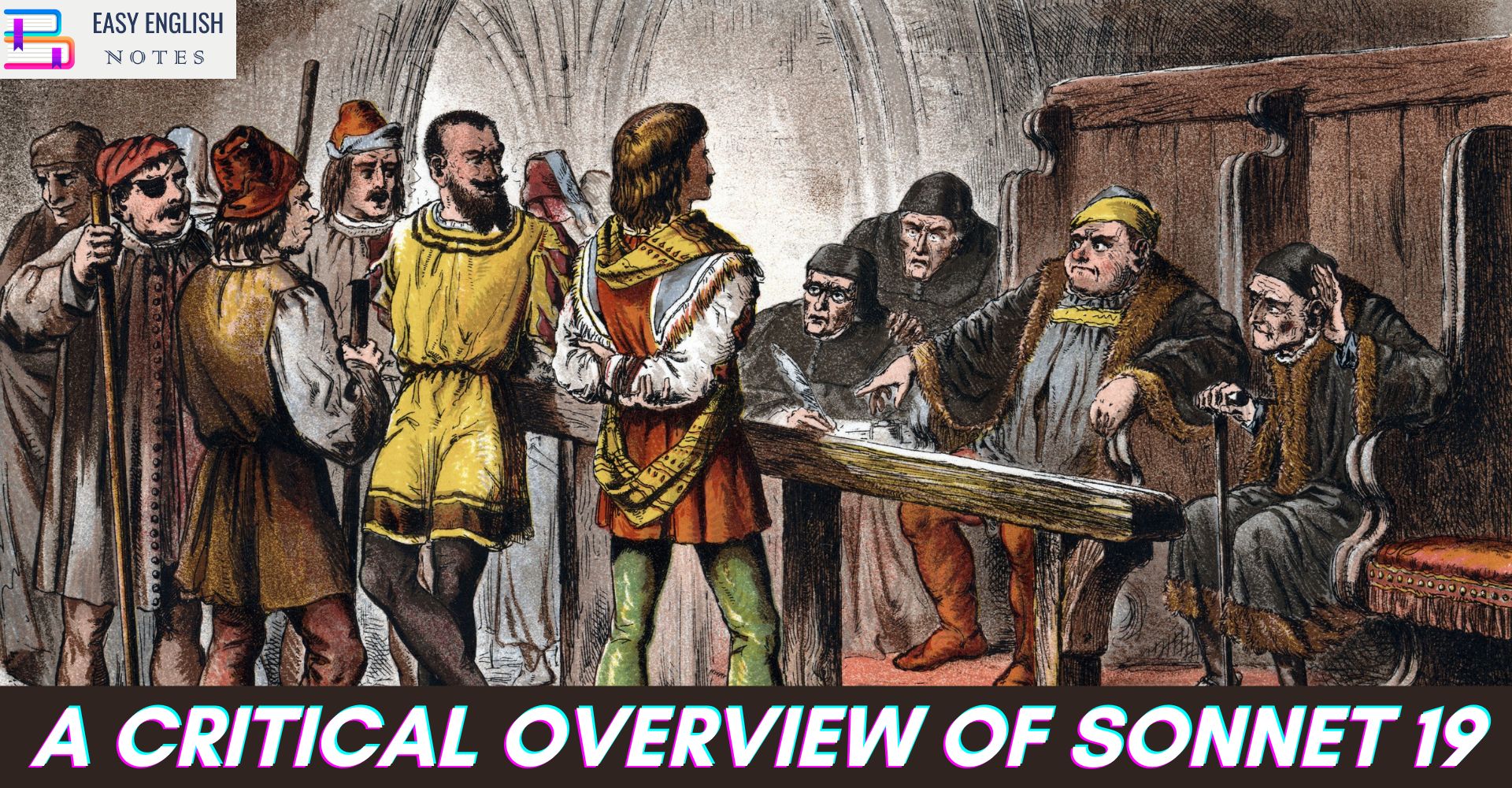Introduction:
Sonnet 19 is a remarkable piece of poetry written by the renowned playwright and poet, William Shakespeare. Part of his collection of 154 sonnets, this particular sonnet stands out for its profound exploration of the themes of time, mortality, and the power of verse to transcend the limitations of human existence. In this critical overview, we will delve into the intricate details of Sonnet 19 and examine its significance in Shakespeare’s body of work.
Understanding Sonnet 19:
Sonnet 19 is structured in the traditional Shakespearean sonnet form, consisting of three quatrains followed by a concluding couplet. The poem revolves around the central idea of the destructive power of time and its relentless ability to erode everything in its path, including beauty and youth. The speaker addresses time as an adversary, acknowledging its strength while also expressing a desire to find a way to defeat its effects.
The sonnet begins with the famous line, “Devouring Time, blunt thou the lion’s paws,” wherein the speaker directly addresses time as a devourer, commanding it to blunt the claws of the mighty lion, symbolizing strength and power. This initial image sets the stage for the subsequent exploration of time’s destructive nature and the speaker’s quest for a solution.
The speaker goes on to highlight the ephemeral nature of beauty, emphasizing that even the most exquisite aspects of the natural world, such as roses and lilies, eventually succumb to the ravages of time. The theme of transience is further reinforced through references to the natural elements of the sun, the moon, and the stars, all of which are subject to the passing of time.
However, amidst the contemplation of mortality, the sonnet takes a turn in the final couplet. The speaker introduces the concept of verse as a means to combat time’s destructive forces. He suggests that through the power of poetry and the written word, future generations can continue to admire the beauty of those immortalized in verse. The speaker’s belief in the ability of verse to bestow immortality upon its subjects serves as a testament to the enduring power of art.
Themes and Significance:
Sonnet 19 encapsulates several recurring themes found throughout Shakespeare’s sonnets. The transience of life, the inevitability of aging, and the desire for immortality are all examined through the lens of time’s passage. The speaker’s plea to time to spare the beauty of the beloved reflects a universal human longing to preserve the fleeting moments of joy and beauty.
Moreover, the sonnet showcases Shakespeare’s belief in the power of art to transcend time and preserve the essence of human experience. Through verse, the speaker strives to overcome the limitations of mortality and create a lasting legacy that will be admired by future generations. This theme of art’s ability to conquer time aligns with Shakespeare’s broader exploration of the transformative and immortalizing nature of poetry.
Also Read :
- Compare Hamlet with Macbeth, Othello and other Tragedies
- “The Pardoner’s Tale” is the finest tale of Chaucer
- Prologue to Canterbury Tales – (Short Ques & Ans)
- Confessional Poetry – Definition & meaning
The central theme of Sonnet 19 revolves around the relentless passage of time and its ability to diminish beauty and youth. The speaker personifies time as a devourer, urging it to blunt the paws of the mighty lion. This bold command reflects the speaker’s desire to confront and challenge the destructive nature of time.
Throughout the poem, Shakespeare employs captivating imagery to convey the ephemeral nature of beauty. References to flowers such as roses and lilies, which are traditionally associated with beauty and fragility, emphasize the fleeting existence of physical attractiveness. The sun, moon, and stars also serve as symbols of celestial bodies that are subject to time’s influence. Through these vivid images, the poem captures the transient nature of life’s most captivating aspects.
However, the sonnet takes a surprising turn in the concluding couplet. The speaker introduces the power of verse as a means of achieving immortality. By immortalizing the beauty of the beloved through poetry, the speaker believes that future generations can continue to appreciate and celebrate their allure. This shift from contemplation of mortality to a celebration of art’s ability to transcend time showcases Shakespeare’s belief in the transformative and immortalizing power of verse.
Sonnet 19 holds significant thematic connections to other poems within Shakespeare’s sonnet sequence. The exploration of time, mortality, and the desire for eternal youth reoccurs throughout the collection, illustrating Shakespeare’s preoccupation with these universal themes. Moreover, the sonnet serves as a reflection of the Renaissance era’s fascination with the concept of memento mori, a reminder of the transient nature of life and the inevitability of death.
In conclusion, Sonnet 19 stands as a profound exploration of time, mortality, and the enduring power of art. Shakespeare’s masterful use of imagery and his contemplation of the transient nature of beauty leave a lasting impact on readers. The sonnet’s ultimate message highlights the ability of poetry to defy the limitations of time and achieve a sense of immortality. Sonnet 19 serves as a testament to Shakespeare’s poetic genius and his ability to provoke profound reflection on the nature of human existence.
PLEASE HELP ME TO REACH 1000 SUBSCRIBER ON MY COOKING YT CHANNEL (CLICK HERE)











